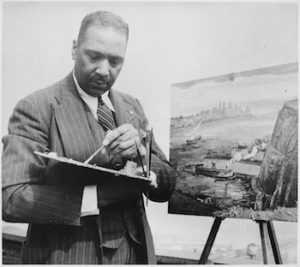
Palmer Hayden
On this date, we celebrate Palmer Hayden's birth in 1890. He was a Black artist whose work became known during the Harlem Renaissance.
Born Peyton Cole Hedgeman in Wide Water, Virginia, he was a prolific artist of his era. He depicted Black life in oils and watercolors.
Hayden studied at the Cooper Union in New York City as a young man and practiced independent studies at Boothbay Art Colony in Maine. He created one of his first famous pieces in 1926, a still life called "Fetiche et Fleurs," which won the Harmon Foundation’s Gold Award, prompting his patrons to support him to live and study in France. Over the next five years in Paris, Hayden was very productive, trying to capture elements of Parisian society.
On his return to America, Hayden began working for the United States government. He worked for the U.S. Treasury Art Project and the Depression-era government-funded Works Progress Administration (WPA).
Hayden inspired himself from his environment, focusing on the Black experience. He tried to capture rural life in the South and New York City's urban backgrounds. Many of these urban paintings were centered in Harlem. The inspiration for "The Janitor Who Paints" came from Cloyde Boykin, a friend of Palmer's. Boykin was also a painter who supported himself through janitorial work. Hayden once said, “I painted it because no one called Cloyde a painter; they called him a janitor.” Many people consider this painting to express Palmer's challenging times.
Palmer Hayden created a painting series on Black folk hero John Henry. This series consisted of 12 works and took ten years to complete. John Henry was a strong, heroic Black man who used a hammer to create railroads and tunnels through mountains.
His works have also been exhibited, including at the New Jersey State Museum and the Galerie Bernheim-Jeune. Palmer Hayden was a great artist who made many visual contributions to this country. He died on February 18, 1973.
The St. James Guide to Black Artists
Schomburg Center for Research in Black Culture
Edited by Thomas Riggs
Copyright 1997, St. James Press, Detroit, MI
ISBN 1-55862-220-9